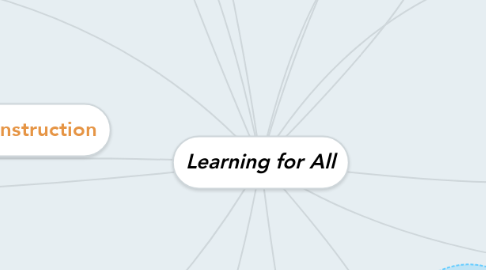Learning for All
by Shelley Smith

1. A Culture of Collaboration Educators in a professional learning community understand that they learn and work together to achieve their collective purpose of learning for all. The powerful collaboration that characterizes professional learning communities is a systematic process in which educators work together with parents and community partners to analyse and continuously improve their classroom and school practices.
2. Student profiles should include: • their learning styles and preferences (often referred to as a “learning profile”); • their current place in the learning, or "readiness to learn”, with respect to the expectations of the particular subject and grade or course, as well as their learning strengths and areas in need of improvement; • their interests and talents; • their socio-affective characteristics; • the challenges involved in meeting their learning needs, and the supports that are required to address those needs.
3. A Focus on Results Professional learning communities judge their effectiveness on the basis of results. Every educator participates in an ongoing process of identifying current levels of achievement, establishing goals to improve those levels, and working together to achieve those goals.
4. In professional learning communities, there also is a process and practice in place to guide decision making in implementing timely support and interventions through a team approach. The team responds to individual student learning needs and monitors, tracks, and analyses student data to improve student achievement. There are collaboratively constructed learning goals and success criteria, and students are seen as partners in their learning.
5. Three Effective Approaches Universal Design for Learning (UDL), differentiated instruction, and the tiered approach to prevention and intervention.
6. An emphasis on knowing your students as the starting point for effective planning of assessment and instruction is consistent with this approach. The following steps are part of the process of getting to know all the students in the class: • gathering information about the students; • engaging students and parents during the course of information gathering; • processing and synthesizing information in order to develop an understanding of each student’s strengths, learning style(s), preferences, needs, interests, and readiness to learn; • selecting and/or developing, and implementing, appropriate and productive combinations of assessment and instructional strategies, activities, groupings, and resources to address the diverse needs of the students in the class.
7. A class profile is developed by gathering information about each student from the following sources: • Ontario Student Record (OSR) • any transition plans the student may have • Individual Education Plan (IEP) if the student has one • consultations with current and previous teachers • consultations with parents, and/or parent–student questionnaires • consultations with students through surveys (e.g., interest inventories, attitudinal surveys) and conferences or interviews • classroom observation (e.g., anecdotal notes) • initial assessments (e.g., pretests) • class profiles from earlier grades • Education Quality and Accountability Office (EQAO) data
8. Instructional Approaches
9. Planning Assessment and Instruction
10. Learning for All Through Professional Learning
11. Understanding Achievement Gaps •Refers to the disparity in achievement among groups of students •Learning gap refers to the gap between a student's achievement and his/her potential Research confirms that gaps in student achievement can be narrowed and overall improvement in achievement attained if: 1. the responsibility for making these changes is shared by all partners in the education system – students, parents, educators, and community partners 2. there has been a sustained and deliberate focus on individual students’ strengths and needs, assessment for learning, and precision in instruction through evidence-informed interventions
12. Our Shared Beliefs • All students can succeed. • Each student has his or her own unique patterns of learning. • Successful instructional practices are founded on evidence-based research, tempered by experience. • Universal design and differentiated instruction are effective and interconnected means of meeting the learning or productivity needs of any group of students. • Classroom teachers are the key educators for a student’s literacy and numeracy development. • Classroom teachers need the support of the larger community to create a learning environment that supports all students. • Fairness is not sameness.
13. Benefits of Assessment for Learning Research confirms that assessment for learning is one of the most powerful tools for improving learning and raising standards, because it is rooted in helping students learn more. Includes diagnostic assessment and formative assessment
14. Assessment for Learning Assessment as Learning Assessment of Learning
15. Vision and Purpose
16. Assessment for Learning


